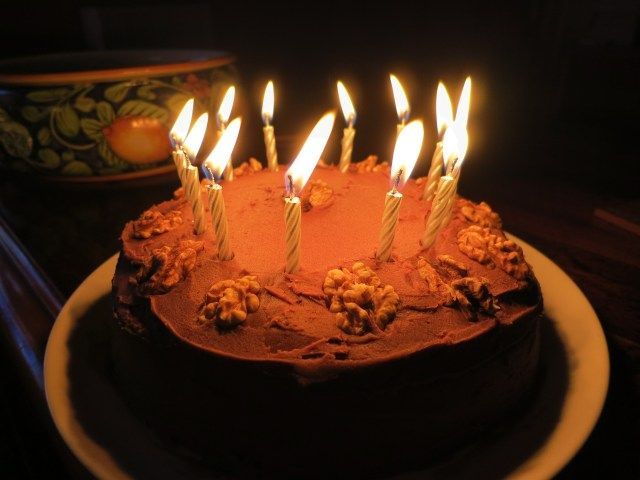Do Tea Light Candles Melt?
What Are Tea Light Candles?
Tea lights are small candle holders containing wax and a wick. They get their name from their traditional use of providing dim lighting during afternoon tea. Tea lights are typically made of metal, glass or ceramic. They are relatively inexpensive and widely available.
The most common use of tea lights is in decorative candle holders, either as accents or lighting. Their small size makes them convenient to place in contained votive holders or candle holders. They can be used to create ambiance and scent. Tea lights are popular for centerpieces, mood lighting and holiday displays. Their portability also allows them to be used outdoors.
The wax in tea lights is commonly made from paraffin, soy or beeswax. Paraffin is a petroleum-based wax, while soy wax comes from soybean oil. Beeswax is made by honey bees. Tea lights contain a cotton wick that burns as the wax melts. They are designed to burn for 4-6 hours, depending on the wax, wick and other factors.
Do Tea Lights Melt?
Yes, tea lights are designed to melt as they burn. The wax pool is contained in a metal casing.
Tea lights get their name because they are often used to keep teapots warm. The small size and portability of tea lights allows them to be placed under a teapot on a table. As the wax melts, it creates a pool of liquid wax which heats up the metal casing and teapot above.
For the tea light to melt properly, the wax formulation is precisely engineered. The wax has a low melting point so that it liquefies once the candle is lit. This allows the wax pool to spread out evenly across the metal casing containing it. The metal casing helps retain the heat and ensures the wax melts in a controlled manner.
If the wax was too hard, it would not melt sufficiently to create an even heat source. And if the melting point was too low, the candle could overheat or lose its shape too quickly. The wax blend in tea lights is optimized for gradual, consistent melting once ignited.
So in summary, melting wax is inherent in the design and function of tea light candles. The controlled melt pool is what allows them to serve as a small portable heat source in applications like warming a teapot. The specialized wax formulation facilitates this key behavior of tea lights.
How Tea Lights Burn
Tea lights burn through a simple process. The wick at the center of the candle is where the flame begins. As the flame melts the wax around the wick, the liquefied wax travels up the wick via capillary action. This wax fuel is then vaporized by the flame and combines with oxygen in the air to sustain the flame through combustion.
The wax used in tea lights has a low melting point, usually between 120-160°F. This allows the wax to liquefy quickly once the wick is lit. Common waxes used are paraffin, soy, and beeswax. The melting point depends on the type of wax and any additives. For example, paraffin wax has a melting point around 130°F while soy wax is slightly higher at 135-145°F.
Tea lights are designed with a wide wick in relation to the size of the candle. This allows the flame to melt wax quickly to sustain itself. Without a properly sized wick, the flame would be choked for fuel and go out faster than intended.
Melting Point of Waxes
Different waxes used in tea lights have varying melting points that determine if and when they will melt:
Paraffin Wax – The most common wax for tea lights is paraffin, a petroleum-based wax. Paraffin has a melting point between 115-150°F (46-66°C), allowing tea lights to liquefy into a pool of wax as they burn.
Soy Wax – Some natural or eco-friendly tea lights are made from soy wax, typically with added oils and resins. Soy wax melts at temperatures between 115-135°F (46-57°C), so it melts at a similar point to paraffin.
Beeswax – Beeswax has a higher melting point of 143-148°F (62-64°C). So beeswax tea lights maintain their shape more than soy or paraffin. The wax pool is shallower before extinguishing.
Burn Time
Tea lights typically burn anywhere from 3-6 hours. This can vary quite a bit depending on the wax, wick size, air drafts, and other factors.
Harder waxes like paraffin tend to burn longer (5-6 hours) while softer waxes like soy or beeswax burn for shorter periods (3-4 hours). Bigger wicks also increase the rate of burning so the candle burns faster. Air currents and drafts will make tea lights burn faster as more air feeds the flame. Burn time also depends on if the candle burns continuously or if the flame flickers on and off.
For safety, it’s recommended to keep an eye on burning tea lights and not leave them unattended for more than a few hours. Consider the surface underneath as wax can drip as the candle burns down. Extinguish tea lights before going to sleep or leaving home with candles still burning.
Safety
When using tea lights, it’s important to keep safety in mind to avoid potential fire hazards. Here are some tips for using tea lights safely:
Supervise burning tea lights – Never leave burning tea lights unattended. Always keep them in sight and extinguish them before leaving the area.
Use nonflammable holders – Always place tea lights in a container made of glass, metal or ceramic. Avoid using plastic or paper holders which can melt or ignite. Leave space between multiple tea lights so they don’t overheat each other.
Keep away from flammables – Position tea light candles away from anything flammable including curtains, paper, furniture, clothing and hair. Keep a safety zone of at least 12 inches.
Place on stable surfaces – Set tea lights on flat, stable surfaces that cannot tip over. Never put them on uneven ground or soft furnishings.
Keep out of reach of children and pets – Store unused tea lights up high in a closed cabinet and keep burning tea lights somewhere safe where kids and animals cannot access them.
Extinguish properly – It’s safest to gently blow out tea lights when finished instead of pinching to avoid getting burned. Make sure the wick is no longer glowing. Allow melted wax to fully harden before handling.
Taking the necessary precautions helps ensure tea lights don’t pose a fire risk or safety hazard when used properly and responsibly.
Environmental Impact of Tea Light Candles
Tea lights and other candles can have varying impacts on the environment depending on the type of wax used.
Paraffin wax is a petroleum byproduct, so burning paraffin candles contributes to fossil fuel consumption. Paraffin can also release trace amounts of toxins like benzene and toluene when burned. However, paraffin wax is inexpensive and widely available.
Soy wax is made from soybean oil, a renewable resource. Soy wax burns cleanly and is biodegradable. However, there are concerns over the environmental impacts of soybean farming practices.
Beeswax is a natural wax made by honey bees. Beeswax candles are non-toxic, biodegradable, and support beekeepers. However, beeswax is more expensive than other waxes.
Reusable tea light candles made from metal, glass, or ceramic materials have less environmental impact than single-use wax tea lights. However, reusable tea lights may have higher upfront costs.
When choosing tea lights, consider renewable, non-toxic waxes for less environmental impact. Reusable tea lights are also an eco-friendly option over single-use wax tea lights.
Cost
The cost of tea light candles can vary based on the type of wax used and whether they are purchased in bulk. Here are some of the key factors that impact the price:
Paraffin wax tea lights are generally the least expensive option. Paraffin is a byproduct of petroleum refining so large quantities are readily available. Paraffin tea lights can often be purchased for $1-2 for a pack of 12-24 candles.
Soy wax and beeswax tea lights cost more than paraffin, typically ranging from $0.25-0.75 per tea light when purchased in bulk cases of 100-500 candles. These natural waxes take more resources to produce so they come at a premium.
Buying tea lights in bulk quantities can provide major cost savings. When purchasing cases of 100 or more candles, bulk pricing discounts of 20-40% off the per unit price are typical. This makes bulk buying cost effective for frequent tea light users.
Purchasing longer burn time tea lights that last 5-6 hours usually costs a bit more per candle compared to standard 2-3 hour tea lights. However, the longer burn times mean you use fewer tea lights overall, which can offset the marginally higher per unit cost.
Tea Light Candle Alternatives
If you’re looking for alternatives to traditional tea light candles, there are a few options to consider:
LED Tea Lights
LED tea lights are electric tea lights that provide flickering illumination without an open flame. They contain LED bulbs and a battery pack to mimic the look of a real burning candle. LED tea lights come in a variety of styles, from traditional wax looks to more decorative colors and shapes. They offer the ambiance of tea lights without the fire hazard, mess, or environmental impact of wax and oil. LED tea lights also last much longer than traditional tea candles.
Flameless Candles
Flameless candles are another electric option that provide ambient lighting without an open flame. They use LED bulbs, fiber optics, or other technology to simulate the flicker and glow of a real candle flame. Many flameless candles come in small, tea light sizes and shapes to directly replace tea lights in candle holders. Flameless candles eliminate smoke, soot, and fire risks associated with burning candles. They also don’t melt, don’t get blown out, and have much longer lifespans than standard tea lights.
Votive Candles
Votive candles are a similar small, short candle variety that can often be used as alternatives to tea lights. Votive candles are typically contained in a small glass container, making them easy to place in candle holders. They come in wax and oil versions, generally burning between 4-6 hours each. Votive candles provide real flame ambiance like tea lights. However, they burn longer, are self-contained, and are often reusable if encased in glass containers.
Summary
To recap the main points, tea light candles do melt while burning. The wax used in tea lights has a low melting point, allowing the wax to liquify into a hot pool of fuel as the wick burns. Tea lights burn for up to 4-6 hours on average before burning out. While burning, tea lights can reach high temperatures and must be used cautiously to avoid fire hazards. But tea lights offer benefits like ambiance, fragrance, and affordability that make them popular for a variety of uses. They are generally safe when used properly by following basic safety precautions. Now you know the answer to the original question – yes, tea light candles do melt.


